
Home > Redesign Your Website Without Losing SEO: Armchair Method
Table of Contents
ToggleThe digital world has become a competitive sphere with the upsurge of technological innovations and the intervention of AI In business. To match up with the fierce competitors in this l spectrum, your business needs to have a digital presence. The foremost step towards staying ahead of the game is revamping your website to fit in with the rest of the competition.
Google crawls websites and checks for several elements before deciding whether or not to show them in search results. Your site’s design can significantly impact how users perceive you and whether or not they click through to take you into their cyberworld. Research has shown that redesigning a site offers the opportunity to refresh old content that can increase organic traffic by 106 percent [Source].
An intuitive design that is easy for the target audience to understand is essential for keeping visitors returning for more. But redesigning your site can be scary if you don’t know where to start or how to proceed. And frequently, redesigning the site business often ponders whether the new design will lose search engine optimization (SEO). Or would the new layout improve it?
In this blog, we have covered vital tips on how to redesign your website without losing SEO.
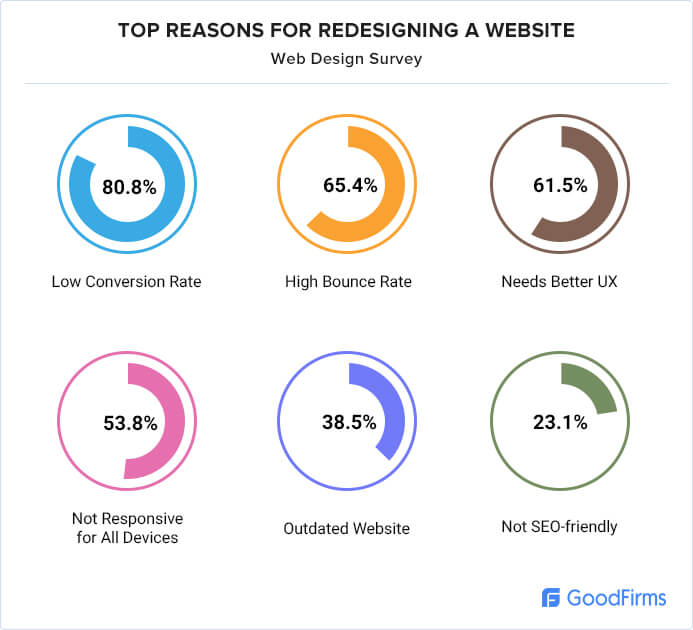
Image Source: Goodfirms
A website redesign can result in improved search engine rankings. A website’s design and content play an important role in how well a site is ranked in search results. A site that has a well-ranked page is likely to have a better chance of being found by potential visitors than a site that isn’t well-ranked. There are many reasons why a website may require redesign for SEO purposes.
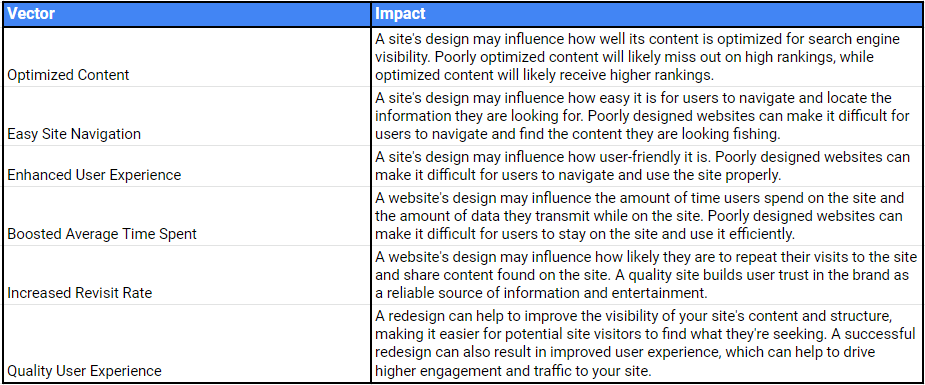
A website redesign can have a critical impact on SEO. Redesigning your website can result in a loss of valuable search engine ranking spots. The primary reason for this is that changes to a website can confuse Googlebot and result in lower rankings.
While designing a site, you should always keep in mind that it’s an integral part of the SEO, and if not done perfectly, it can lead to a downfall. One way to avoid this is to ensure that your changes are done correctly and by Google’s guidelines.
If you cannot retain your existing ranking, your best bet is to implement a comprehensive SEO campaign that follows Google’s guidelines for site best practices.
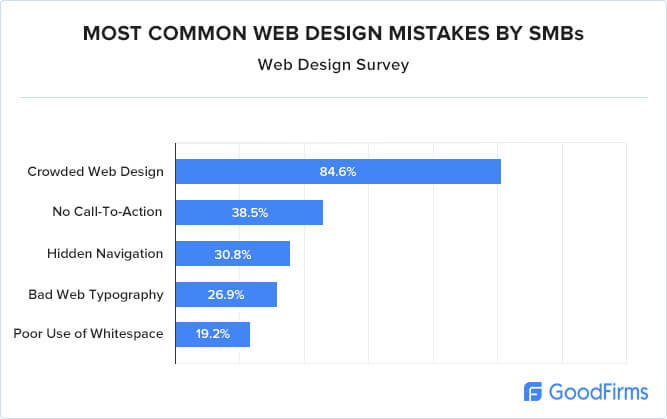
Image Source: Goodfirms
Creating a successful website requires careful strategic planning and effective strategy execution. It also requires realistic expectations about what your business can achieve with such limited resources as bandwidth, hosting space, and design skills. Remember that any changes—even those seemingly minor—can have enormous implications on search engine optimization (SEO).
Remove every unnecessary detail from your design so that it is easy for Google to crawl, index, and rank. Remove hidden text elements (alt tags), images not accessible through the site’s URL structure or internal linking structure, Flash content, or other non-essential features to ensure the best possible performance by search engines over time. With these insights, let’s check out the crucial aspect of site redesign without having a significant effect on your SEO:
Pre-redesigning your site can save you a lot of trouble in the long run. Before starting any redesign project, you must ensure your content needs an update. Here it would help if you opted for a site suit to get more data-backed insights.
Take time to think about your content and how it can be improved. If you are redesigning your site to make it look better, you should also ensure that the content is better.
When pre-redesigning your site, you are also checking to make sure that the content is still relevant and valuable for the people who are going to be browsing your site. Also, along with connecting with performing the site audit leveraging tools such as screaming frog, you should keep a note of the crucial aspect such as:
Your website’s HTML could be outdated, significantly if you are redesigning your site. It could confuse your visitors, as well as cause a lot of frustration. That is why you should update your HTML as soon as possible.
When you are updating your HTML, you need to make sure that you are also keeping your site’s code clean. If you are redesigning your site, you would also want to ensure that your site’s codes are kept clean and are not cluttered with any old code you do not need.
Internal linking points from one page to another within your website’s pages or between websites. It’s vital to note that all links are technically internal links.
The Internet is a global platform, and as such, it follows a set of standards for how content is supposed to look and function across different platforms. A responsive design, on the other hand, is a design that can adjust its layout to be suitable for the device being used to view it.
Creating valuable and exciting content is an effective way to get visitors to your site. You can’t do either of these if your images are too big. Images are an impactful way to grab people’s attention and bring them to your site, but they can also make it pretty challenging for you to rank on the search engine results page.
Before you redesign your site, you should look at your images and see if any of them could be the-chunked. A de-chunked image is lower on the page and not as large as the other images.
This can help improve your SEO because it allows more of your content to be shown to the user, making it easier for them to find what they are looking for.
Deleting the pages of the site directly causes 404 “Page Not Found” errors, and it harms the site ranking and the traffic.
Mobile devices are the future of Internet access, so it would be wise for you to make your site responsive and mobile-friendly.
The editorial strategy you create for your redesign project should apply to all your content, not just the new content. You should also include your old content in the editorial strategy of your new design. Doing this will help keep your website as a source for information and a place for your brand to be seen.
The surge of the 404 eros in the website redesigning process is problematic. It makes the site user experience poor and a significant reason for increasing bounce rate. The UX of your redesign project should be improved for your new site.
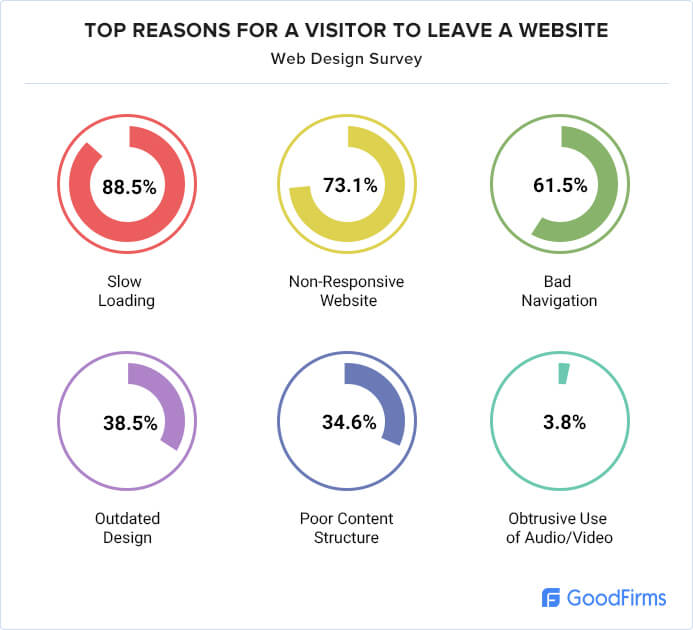
Image Source: Goodfirms
To assess how your test site is structured, utilize a site crawler and crawl the test site to compare it with your current site. Once the process is done, you will get the data to identify metadata, structure, and errors the test site currently has.
Rinse and repeat to match up all your Meta Descriptions, Canonical Tags, Word Counts, etc., to ensure that any new changes are good and derived from the data-backed insights.
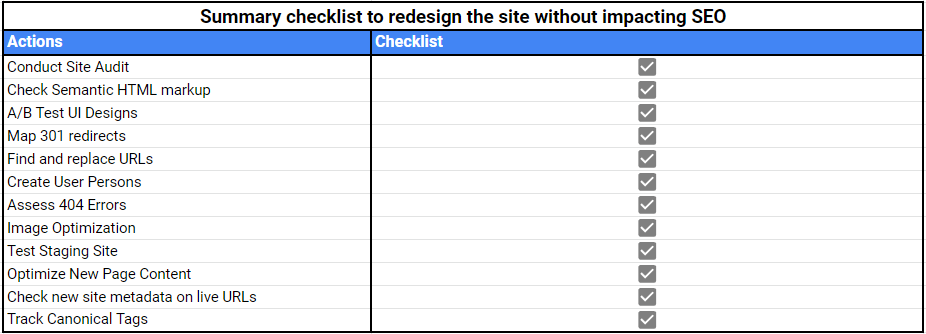
With the help of these redesign tips, you can quickly get your online presence in shape. You can make the site more visually appealing, easier to navigate, informative, and engaging. These tips can help keep your website fresh and relevant to your users.
As much as you want your website to be visually appealing to your users, you should also ensure they can still easily understand your content. To achieve this, you can consider adding video to your site. With video, you can add a visual voice to your writing, which can be a great way to convey information and make your site more informative.
You can also use video to provide a way for users to consume your blog or the site resources content while on the go. If you must use video, keep it to less than 30 seconds. When creating a video, ensure you know the timing issues affecting your SEO efforts.
Your website serves as a primary source of online visibility for your brand. Integrating user-friendly site features & functionalities to influence offering a glorified UX experience. To enhance your conversions, leverage the standardized high-end SEO efforts and the designs suggestion from the FP team of SEO experts. To accurately shape your digital map on the online spectrum with the comparative advantages, snag a call with us today!
Rajashree Goswami
I tweak my imaginations and thoughts to create creative & narrative content. At FirstPrinciples, as Content Writer Lead, I underpin solutions into words, and put the assessments into threaded paragraphs to solve the readers’ pain points. When not on my table, you can find me roaming around nature with the...